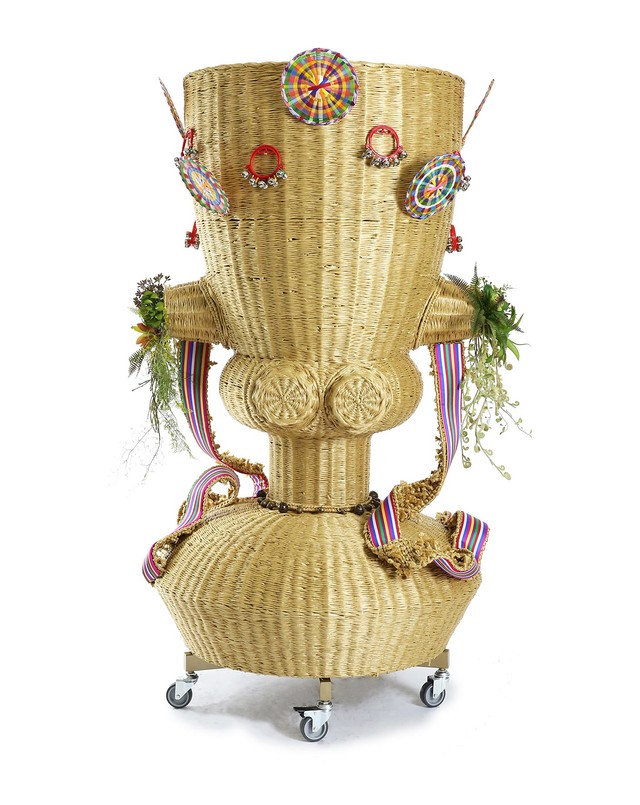Press Release
Talbot Rice Gallery and the University of Edinburgh are proud to present Pine’s Eye, an exhibition exploring the relationship between people and nature with Firelei Báez, Beau Dick, Laurent Grasso, Alan Hunt, Torsten Lauschmann, Ana Mendieta, Kevin Mooney, Beatriz Santiago Muñoz, Taryn Simon, Johanna Unzueta, Lois Weinberger and Haegue Yang.

Pine’s Eye
Talbot Rice Gallery, Edinbourgh (Scotland)
29.02 - 19.12.2020

Exhibition February 29 -

© ArtCatalyse International / Marika Prévosto 2020. All Rights Reserved

Haegue Yang, The Intermediate – Long Neck Woman Upside Down, 2016. Artificial straw, powder-
Daring us to break the legacy of modernism, Pine’s Eye is led by indigenous cultures—including new works and a performance by Kwakwaka’wakw artists—spirits, folk tales, magic and stories of the forest. Looking for ancient figures, ideas and energies that have survived colonialism, industrialisation and disenchantment, it seeks forms of resistance vital to us in these times of environmental crisis.
Firelei Báez draws upon African-
Drawings by Ana Mendieta (1948–85) reflect the potent symbols she used to explore ancient customs and unite her body with the Earth. Kevin Mooney reinterprets Ireland’s colonial past and its historically stifled cultural heritage by imagining encounters between Irish folk traditions and those of the Caribbean. Beatriz Santiago Muñoz makes documentary films that centre on the despoiled ecology of her native Puerto Rico, exploring the relationships between plants, people, magic and ecology. Taryn Simon’s Paperwork and the Will of Capital remakes the compositions of flower arrangements that appear in photographs documenting the signing of treaties, trade agreements and diplomatic accords. Johanna Unzueta references defiant Mayan weaving techniques through a large site-
Pine’s Eye is supported by Creative Scotland, with additional support from Canada Council for the Arts, The Henry Moore Institute and the High Commission of Canada to the United Kingdom.